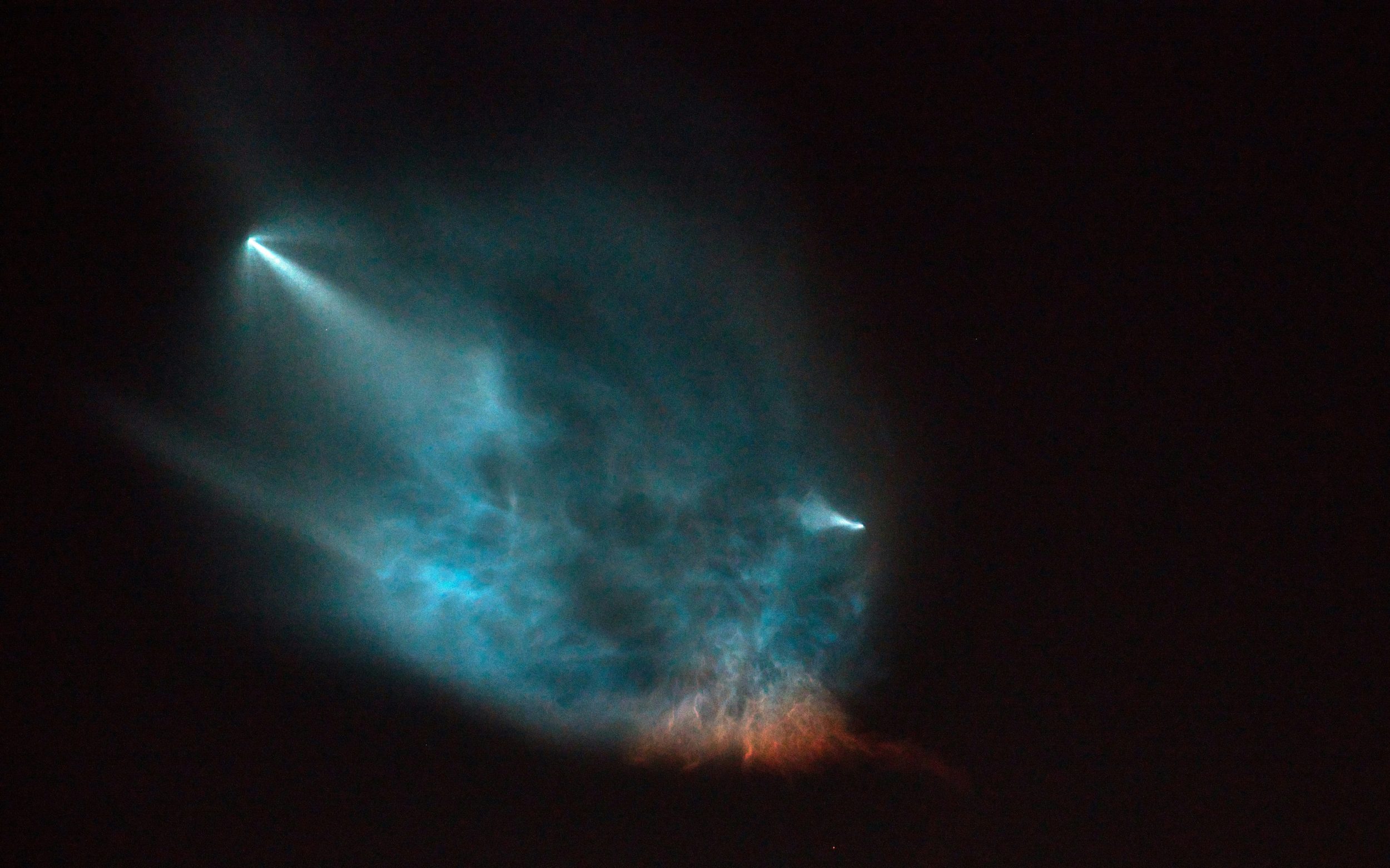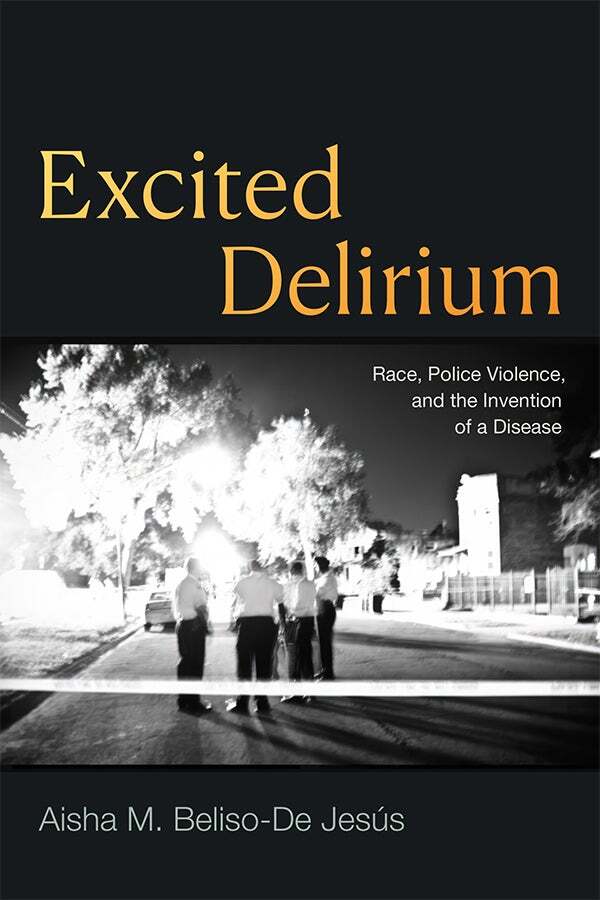Everyone had written Jeremy Ellis off. Maybe that is why he began to haunt me.
It started about two weeks before I was scheduled to interview Jeremy’s daughter, Jade Ellis. I could not sleep at night. Intrusive thoughts seemed to take over my research and writing. I had strange dreams of people dying; the police were involved. I wondered if I was being triggered by studying police violence. I grew up in the 1980s and 1990s in San Francisco’s Mission District. At that time, the Latiné community I came from in “the Mission” lived in fear, stemming both from street gang beefs that made it difficult to walk from one block to the next and from the police, who were known for their abuse and violence. Coming from a family of Puerto Ricans who practiced Afro-Caribbean religions made my childhood especially anxious: I had the additional concern that we would be seen as an evil “cult.” I learned the hard way that the police were also a real danger.
When I began to conduct research on the policing and criminalization of Afro-Caribbean religions in the United States, I was aware that research can impact the scholar. I chalked up the difficulty I was having in writing my book, Excited Delirium: Race, Police Violence, and the Invention of Disease, to the subject itself—it certainly evoked strong emotions in me. Still, I could not shake the feeling that there was more to this research that was haunting me.
The haunting started when I was researching the policing of Afro-Latiné religions and came across a little-known cause-of-death classification called excited delirium syndrome. Medical examiners have used the syndrome when assigning cause to the unexplained deaths of mostly Black and Latiné men killed during police interactions. To me, it sounded made-up. The term itself was troubling, but as I looked into the scientific explanations of the syndrome, it seemed even more problematic. I found that excited delirium syndrome was a controversial diagnosis for people who are said to have exhibited “superhuman strength”; are considered impervious to pain; are said to have become aggressive, excited, sweaty, and agitated; and who then suddenly “up and died,” as police officers have been known to say. In this context, police officers are seen as innocent bystanders who just happen to witness the unexplainable deaths of so-called criminals, who are subsequently written off as having caused their own deaths. However, almost all these deaths occur during police interactions, and they almost always involve police use of force, such as hog-tying people, applying carotid choke holds, kneeling on people’s bodies, stunning them with Tasers, injecting them with sedatives, or imposing other forms of forceful restraint.
After I learned of excited delirium syndrome, I could not get it out of my head. It was as if I saw excited delirium syndrome everywhere. In 2020 my eldest son, Neto, purchased his first home. His family chose Antioch, California, whose rolling hills, warmer climate, and suburban houses promised relief from the everyday violence of city living. That same year in Antioch, on December 23, just two days before Christmas, a brown-skinned, thirty-year-old Filipino man named Angelo Quinto was killed during a police interaction.
Medical examiners claimed Quinto’s death was caused by “excited delirium syndrome.” Multiple officers at the scene had knelt on Quinto’s body until he ceased to struggle. When paramedics arrived, Quinto was purple and unresponsive, and his face was bloody. Just seven months earlier, the world was rocked by videos of the death of George Floyd, who, like Quinto, had also been knelt on by multiple officers before dying in police custody. A little-known fact is that police and attorneys described both Quinto and Floyd as having allegedly exhibited excited delirium syndrome.
I became obsessed with excited delirium syndrome. As I looked into death after death, I did not realize then that it was possible I was being haunted. What felt like an unexpected rabbit hole in my research had become so much more.
With excited delirium syndrome in my head, I made my way from Stanford University to the East Jade on September 17, 2021, to my son’s house in Antioch, where I planned to interview, at his suggestion, Jade Ellis. Neto told me that Jade had an important story.
I was exploring how practitioners in the United States have been drawing on the ancestral tools of Afro-Latiné religions such as Santeria and Palo Monte to combat police violence. I wanted to see how they used “spiritual activism” to heal generational trauma and make changes in the world. My son Neto and his partner, Naomi, are at the forefront of this work, together with Jade and others. Jade, an Afro-Latiné trans woman from Los Angeles, practices spirituality as a form of activism against police violence.
A poet, liberation artist, and advocate, Jade was about to undergo initiation to become a priestess of Afro-Cuban Santeria. This religious practice, passed down from enslaved African peoples in Cuba, has continued to serve as a healing strategy for generations of Black Latiné people in the Americas. My family are longtime practitioners of Santeria.
Our first interview was in my granddaughter Nayari’s nursery. We sat at a white desk, slightly facing each other. My laptop was open, and I recorded our conversation and took some notes. I was upbeat, happy to finally start the interview. Jade is a busy person, and she was in the Bay Area that weekend to undergo some of her ceremonies. I was so grateful that she had stayed an extra day so we could speak.
“I walk into a room, and I’ve already fucked up so many people’s perceptions of what the world is, you know,” Jade tells me of the violent reactions encountered by Black trans women. Jade’s mother, Carmen, was born in Los Angeles to Mexican and Salvadoran parents, and Jade’s father, Jeremy, was African American and raised among Mexican and Central American cholos. Jeremy spoke Spanish, ate spicy foods, and dated Latina women; he was what scholars might consider latinized as a result of the commingling of urban life in a place where Latiné tastes, customs, and cultures thrived.
Jade, a Black American Latina who practices Afro-Cuban religions, identifies as Afro-Latiné, one of the myriad terms used to acknowledge the “crossings” of Blackness and Latinidad. Such “ethnoracial intimacies” allow for creative and expressive blends that include “children of African American and Latino mixed heritage,” like Jade, as well as Black Latiné or Afro-Latiné communities “with Afro-diasporic ancestry outside the U.S. national boundaries.”
I knew that Jade had become an activist against police violence because of her father’s death, but I did not know much else about her when we sat down for our first interview. Within the first five minutes, Jade told me that her father, Jeremy Ellis, had been killed on June 11, 2011, during a police interaction. Jade was thirteen when she wrote her first poem, where she first put the pain of her father’s death to paper, which she described as baring “her soul” on his grave and becoming her father’s “shadow.”
Even ten years later, Jade was still upset with her father about the timing of his death. To her, it seemed so selfish of him. Jade and her sister, Eva, had not seen Jeremy for a while, and they had made plans to celebrate Father’s Day together. “Because he was either locked up or on drugs or making another family and all that shit, you know. And then literally he died the day before Father’s Day. And, after a handful of years of not seeing each other, we were going to see each other, and then he died the day before Father’s Day. So, I went craaaaazy.” She let herself smile.
Jade felt like kin to me—someone who pushes aside pain with humor to survive. She had a knack for placing her trauma into structural perspectives, and as a result, Jade has developed a profound outlook on life in her twenty-three years. Affirming my perception of her, Jade told me that she had “always been the parent” in her household. After her father’s death, she had to mobilize; at thirteen, she became an activist against police violence.
Jade told me how her father’s spirit had attached to her after he died. She “kind of became him for a while.” Struggling with gender and people telling her how to be, she needed an out. “And then my dad died, and I was like, ‘Oh well, I know how to do that.’ So, I went through this whole spiral where I was like, I have to basically become my dad to preserve him. And so, I started dressing like him.” Laughing, she told me, “Yeah. I went crazy for years and started doing him.”
The circumstances surrounding Jeremy’s death perplexed his friends and family. With an ironic chuckle, Jade tells me, “It’s on brand for him.” Jade did not really know what actually happened to her dad. She knew that he was killed during a police car chase. She knew that police considered Jeremy to be responsible for his own death. “It was unexplainable,” she told me. “He just up and died.”
A chill ran through my body when Jade said those words. It felt as though the temperature in the room had suddenly dropped. I stopped typing on my laptop and looked up at her, stunned.
“What did you just say?” I asked, thinking I might have misheard her.
“What?” she asked me, confused at my reaction. “That he up and died?”
Hesitantly, I asked her, “Do you know if the cause of death was excited delirium syndrome?”
She slowly nodded her head up and down. “How did you know?”
I could not believe that my strange obsession with excited delirium deaths might somehow connect to Jade’s father. Nervously, I responded, “I think your dad’s spirit might be trying to contact me.”
Then Jade surprised me. She smiled, showing a slight dimple, and said, “He’s so annoying.”
I was freaked out. I picked up my laptop and waved it in front of Jade, telling her, “You’re not going to believe this, but I have been researching excited delirium syndrome for the past few weeks!”—as if shaking my laptop in the air would somehow demonstrate to her that this could not be a simple coincidence. But I did not need to convince Jade that her dad was haunting me. With the assuredness of her spiritual understanding, Jade accepted Jeremy’s presence as truth. She explained to me that she had come to Santeria to heal her family’s generational traumas.
I knew from my own understanding, gleaned from growing up within and studying Afro-Cuban religions, that spirits communicate in a number of ways. Practitioners elevate and uplift deceased family members’ spirits and transform the power and potentiality of what I have previously termed their copresences. These copresences account for the embodied ways that Afro-Latiné religious practitioners navigate the world, interacting with a range of spiritual presences that include deceased family members as well as the Yoruba orisha or Congo spirits, among other entities. I thought out loud, suggesting to Jade that she had probably activated Jeremy’s spirit. She agreed. Jade told me that her poetry was a form of spiritual recitation—that she had started creating poetry because of her dad’s death. It was her form of spiritual activism.
“I started organizing, and I started getting politically educated, and I needed something that I [could] reference . . . [to] kind of like sort out all my shit,” she told me.
Jade’s poetic spiritual activism to uplift and heal generational trauma echoes my own path from Latina teen mom to full professor. Something in my story, in my background, also has to do with this journey. Jade related to me how she used spiritual activism to relieve the pain and anger of the trauma she had experienced.
“I also knew that I needed something constructive,” she told me. “So that was most of my fight. Because I also think when you first get politically educated, you’re so angry about so much shit—you know what I mean—because it’s like, you’re being dropped from the matrix for the first time. So, it’s like grief from dad and grieving. Like, everything shattering.”
For me, the interview with Jade shattered everything. Two fundamental aspects of my self—the academic and the spiritual—suddenly collided. The experience opened something up in me. Jade made me realize that I had been in a struggle with myself. I had not allowed myself to see the larger impact of my work and who I was as someone born and raised in Afro-Latiné religions. Although I had dedicated my life to trying to heal generational trauma and combat structural oppression, I had tried to keep my spiritual life separate from my academic life.
While writing Excited Delirium, I started keeping a journal. I hoped it would help me work through my struggle to maintain a separation between the academic and spiritual parts of myself. Instead, the journal helped me grapple with the troubling reality that medical examiners had produced an industry that effectively whitewashed police violence. This research led me to discover that the criminalization of Afro-Latiné religions and the policing of Black Americans are central to the emergence of excited delirium syndrome. These stories coincided with that of a medical examiner from Miami, Charles Victor Wetli, the man who coined the term excited delirium syndrome and who also, strangely, was a so-called expert on Afro-Caribbean “cults.”
Excited delirium syndrome was created to cover up the role of police violence in deaths from Tasers, choke holds, beatings, shootings, and other abuse. This fake syndrome produced a circular industry of expertise—a lucrative arrangement wherein police officers, paramedics, medical examiners, lawyers, and researchers not only hide the deaths of Black and brown people at the hands of police but also become “experts” who are paid to medicalize this violence.
My journal entries illustrate how my Afro-Latiné cultural traditions are part of my own healing process—of being a scholar traumatized by what my research uncovered, of needing to find a way through this material. All scholars are rooted in their cultural practices and social structures, and yet we are trained not to disclose the ways we can be deeply impacted by our work. As I found my way through these troubling accounts, the spirits made themselves available. This could have been because I am a social scientist also accompanied by spirits, orisha, and other copresences who have provided me with a unique attunement to the world, one that allows me to perceive the guidance of these energies. However, Afro-Latiné traditions teach me that these copresences are persistently there, engaging with people, even when individuals are unwilling to recognize their existence. It was Jeremy Ellis’s spirit who first showed me that there was more to the story of excited delirium.
Excerpted from Excited Delirium Syndrome: Race, Police Violence, and the Invention of a Disease by Aisha M. Beliso-De Jesús. Copyright Duke University Press © 2024. All Rights Reserved.
Image: Jim Strasma/Unsplash


